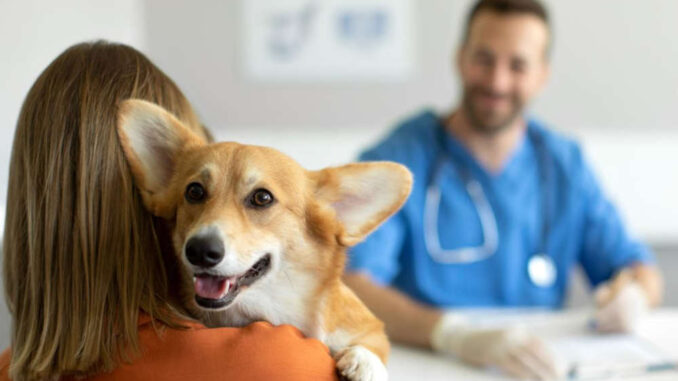
This article was updated on November 25th, 2023
It is usually not possible to accurately diagnose lumps and bumps from their appearance alone, although a veterinarian will have their suspicions. This article explains the process used to confirm an accurate diagnosis, including Fine Needle Aspirates (FNAs) and Biopsies.
About Fine Needle Aspirates (FNAs) and Biopsies
Your veterinarian will likely advise sampling the lump and sending the cells to a lab for analysis. This helps confirm an accurate diagnosis and identify the best treatment plan. The cost of this will vary depending on the clinic and which sort of biopsy procedure is used.
Costs
Simple “fine needle aspirations” (FNAs) cost about $150-300, while biopsies done under anesthetic may cost $400-600.
What are Fine Needle Aspirates (FNAs)?
An FNA means a needle is poked into the lesion and some cells are sucked out for analysis. As this is done quickly and in a conscious dog, it’s relatively inexpensive. This is the test of choice when a Mast Cell Tumor is suspected but is also often used to diagnose lumps such as lipomas and cysts.
The downside of an FNA is we could “miss” the important cells and only suck up blood or fat, so we don’t always get a diagnosis.
What are biopsies?
A biopsy is a much larger sample taken and dogs are usually sedated or put under general anesthetic. They may need a suture or two to close the skin after. This sort of procedure requires an aseptic technique and at least two staff members. The dog must be monitored during and after, as they wake up.
As a much larger sample is taken, it is more likely that we will get a definitive diagnosis. The pathologist is often able to provide us with a lot more detail about what the mass is, and what grade it may be.
How does a vet decide between an FNA and a biopsy?
There are a few considerations:
- Biopsies are often taken when we are concerned for a cancerous tumour such as a sarcoma or when the mass is very diffuse or spread out.
- A biopsy is often the best way of confirming a lesion is cancerous and of determining what grade it is. We are able to get more information as there are a lot more cells to look at compared to an FNA, so this method is much more accurate.
- Large growths are usually biopsied before removing them, so we can plan the lump removal surgery and determine if the patient might need extra therapy, such as chemotherapy. Rather than FNA or biopsy a small growth, it may simply be removed in full, and then sent to the lab for analysis.
- Very vascular lesions might be FNA’ed rather than biopsied, to minimise bleeding.
- It is not uncommon for an FNA to yield an inconclusive results, especially when the mass is not exfoliative; meaning not many cells are shed. It can be frustrating for an owner to pay $100-200 for an FNA, only to get no definitive answer from it. In these cases, we may have to do a biopsy.
Disclaimer: This website's content is not a substitute for veterinary care. Always consult with your veterinarian for healthcare decisions. Read More.


What if the needle won’t go into the growth because it’s to hard?
This is not something I have ever come across before.
If it were to happen, I’d reposition the needle and try again in another section of the mass.
We’d also have to consider a biopsy (taking a larger sample using e.g. a ‘tru cut’ needle or scalpel), to provide more accurate results.
“The information on this website is not a substitute for in-person veterinary care. Always seek advice from your veterinarian if you have concerns about your pet’s medical condition.”